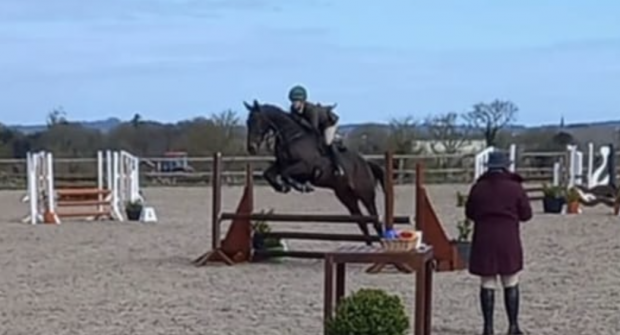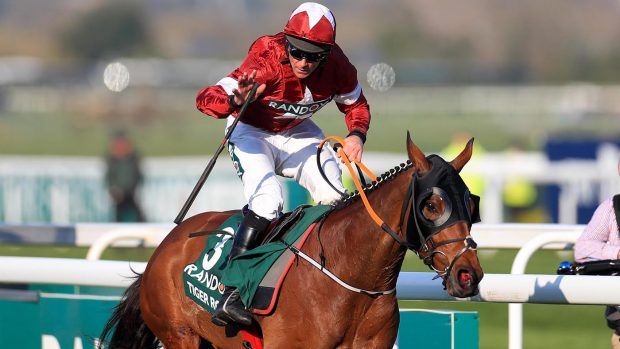For the dressage element of the Horse & Hound/Saracen eventing bursary, international dressage rider Spencer Wilton meets bursary winner 25-year-old Zoe Gould and her seven-year-old ex-racehorse Musical Legend, by Midnight Legend out of a Sadler’s Wells mare. The pair compete at BE90 and are looking to step up to BE100. Zoe is hoping Spencer can advise her on how to gain more crucial marks in the dressage phase.
As Legend is a full thoroughbred, he can struggle with collection and engagement, having been bred to gallop in a longer, flatter frame. Spencer asks Zoe to run through her normal warm-up to allow him to assess the pair of them.
Warming Up
Zoe warms up Legend in a low contact, but he is not working confidently into the rein and isn’t connected enough across his topline. Spencer advises:
- “Ask him to push more from behind to propel himself forward, rather than pulling himself along.”
- “Make the trot more workmanlike with the neck low but a solid connection to the bit. We want him relaxed, but not to be relaxing”
Smooth transitions
Spencer notices that Legend’s downward transitions are also too abrupt.
- “Take your time in the downwards transitions. Rather than sitting heavy and making a definite transition, just stop riding the pace you’re in and think that the transition is going to happen.”
- “Imagine you’re going to trot away as soon as you walk. Sometimes just thinking that is enough. And, when you are trotting, it’s your responsibility to maintain a forward rhythm. You need to train Legend to stay in that rhythm once you’ve put him in it. At the moment he starts with purpose, but the energy levels drop. It can help if you just count out the rhythm in your head.
Staying straight in the canter work
Moving into canter on a 20-metre circle, Legend slides out through the shoulder, so Spencer asks Zoe to straighten his neck, and even bend him a little to the outside if necessary to gain control over the outside shoulder. Riding on an inner track also highlights straightness issues.
- “Hold your outside rein and if you’re struggling to release the inside rein, give the horse a little pat on the neck.”
- “When you are on the inner track, use the outside rein to control the height of the outside ear, while the inside rein dictates the bend.”
Diving down in the canter-trot transition
Seeing that Legend also dives down into the canter-trot transitions in the same way as his trot-walk transitions, Spencer advises that Zoe shouldn’t rely on her reins in her downwards transitions.
- “Don’t put the handbrake on — ride forward into the downwards transitions.”
- “Make sure you use the smallest aids possible in your training. That’ll help you to look elegant in tests.”
Spencer’s top takeaway for Zoe
“If you ride up a gear at home and get comfortable doing that, it will increase Legend’s confidence about moving in that way. Then you’ll find it easier and easier to transfer that into the 20×40 arena for the test.”
If you have an ex-racehorse and would like to discuss your horse’s ration with the nutritional team, visit www.saracenhorsefeeds.com or call 01622 718 487.



